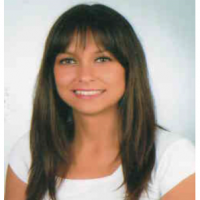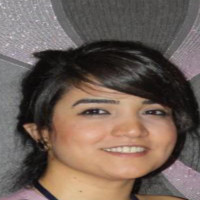Araştırma Makalesi
Derleme
Amaç ve Kapsam
Dokuz Eylül Üniversitesi Hemşirelik Fakültesi Elektronik Dergisi sahibi Dokuz Eylül Üniversitesi Hemşirelik Fakültesi Dekanıdır. Dergi hemşirelik bakımının tüm alanlarındaki araştırmaları kapsayan bir dergidir.
Dergiye yayınlanmak üzere gönderilen makalelerin hemşirelik araştırmaları, hemşirelik eğitimi, hemşirelik uygulamaları, hemşirelik bakımı, sağlığın korunması ve geliştirilmesi, hemşirelik yönetimi ve hemşireliğin tüm uzmanlık alanları ile ilgili olması beklenmektedir.
Dokuz Eylül Üniversitesi Hemşirelik Fakültesi Dergisi;
• Bilimsel araştırma ve yayın okuryazarlığını arttırma,
• Bilimsel normlara ve bilim etiğine uygun, nitelikli ve özgün araştırma sonuçlarının paylaşılmasını sağlama,
• Bilimsel platformda iletişimi geliştirme ve güçlendirme amacı ile yayın hayatını sürdürmektedir.
Ayrıca, küresel anlamda sağlıkla ilgili konuların iyileştirilmesi, toplum sağlığın korunması ve geliştirilmesi ve hemşirelik mesleğinin güçlenmesini amaçlamaktadır.
Dokuz Eylül Üniversitesi Hemşirelik Fakültesi Elektronik Dergisi, Dokuz Eylül Üniversitesi Hemşirelik Fakültesi'nin resmi yayın organıdır.
Dokuz Eylül Üniversitesi Hemşirelik Fakültesi Elektronik Dergisi, hemşirelik bakımının tüm alanlarındaki araştırmaları kapsayan bir dergidir.
Yayınlanmak üzere gönderilen makalelerin hemşirelik araştırmaları, hemşirelik eğitimi, hemşirelik uygulamaları, hemşirelik bakımı, sağlığın korunması ve geliştirilmesi, hemşirelik yönetimi ve hemşireliğin tüm uzmanlık alanları ile ilgili olması beklenmektedir.
Dergide projelerden üretilmiş makalelere ve COVİD-19 ile ilgili çalışmaların yayımlanmasına öncelik verilmektedir.
Dergide özgün araştırma raporları, derlemeler, sistematik derlemeler, meta analizler ve olgu sunumları yayınlanmaktadır.
Dergi yayın politikamız ve makale yoğunluğu nedeniyle 1 Mart 2022 tarihinden itibariyle geçici bir süre dergimize derleme makale kabul edilmeyecektir.
Derginin öncelikli hedef kitlesi farklı uzmanlık düzeyindeki hemşireler, hemşirelik akademisyenleri ve hemşirelik öğrencileridir.
Derginin yayım dili Türkçe ve İngilizcedir.
Yazım Kuralları
DOKUZ EYLÜL ÜNİVERSİTESİ HEMŞİRELİK FAKÜLTESİ
ELEKTRONİK DERGİSİ YAZAR REHBERİ
Dergiye yayınlanması için gönderilen makalelerde aşağıdaki biçimsel kurallara uyulmalıdır:
Makale, Microsoft Word programında, A4 kağıt boyutunda, kağıdın her kenarından 1.5 cm boşluk kalacak şekilde, 1.5 satır aralıklı olarak 12 punto ile yazılmalıdır. Araştırma ve derleme makaleler kaynaklar ve tablo/şekiller dahil 20 sayfayı geçmemelidir. Dokuz Eylül Üniversitesi Hemşirelik Fakültesi Elektronik Dergisi Vancouver yazım kuralları sistemini kullanmaktadır.
Dergi yayın politikamız ve makale yoğunluğu nedeniyle 1 Mart 2022 tarihinden itibariyle geçici bir süre dergimize derleme makale kabul edilmeyecektir.
Kapak Sayfası
Sayfa numarası, kapak sayfası hariç, sayfanın sağ üst köşesinde 1’den başlayacak şekilde verilmelidir. Kapak sayfası ayrıca sisteme yüklenmeli, ana metnin yer aldığı dosyada bulunmamalıdır. Ayrıca kapak sayfası ve ana metin dosyasının sağ üst köşesinde okuyucuya makaleyi tanıtan “kısaltılmış başlık” ilk harfleri büyük diğerleri küçük olacak şekilde yer almalıdır. Kısaltılmış başlık 50 karakteri geçmeyecek şekilde, en fazla 4 sözcük ile sınırlı, 9 punto olmalıdır. Özet başlık tüm sayfalarda üst bilgi şeklinde yer almalı, kısaltılmış başlık ile sayfa numarası arasında 5 karakter boşluk bulunmalıdır. Makalenin kapak sayfasında, makalenin Türkçe ve İngilizce başlığı kelimelerin ilk harfi büyük, kalın (bold) ve ortalanmış olarak yazılmalıdır. Önerilen makale başlık uzunluğu 10-12 kelimedir. Başlıkta kısaltma kullanılmamalıdır. Yazarların isimleri, ünvanları ve bağlı oldukları kurum ve adresleri, iletişimden sorumlu yazarın adı ve elektronik posta adresleri bulunmalıdır. Bilgiler sola yaslanmış şekilde yazılmalı, başlık, yazar isimleri ve kurumları arasında çift boşluk olmalıdır. Kapak sayfasında yer alan bütün bilgiler 12 punto ile yazılmalıdır. Makale daha önce bildiri olarak sunulmuş ise bildiri yeri ve tarihi, varsa çalışmayı maddi olarak destekleyen kişi ve kuruluşlar belirtilmelidir. Yazarların ORCID numarası eklenmelidir.
Araştırma Makaleleri
Araştırma makaleleri; Kapak sayfası (ayrı yüklenecek), Türkçe ve İngilizce Öz (Abstract), Giriş, Amaç, Yöntem, Bulgular, Tartışma, Sonuçların Uygulamada Kullanımı, Kaynaklar bölümünden oluşmaktadır. Gerek duyulduğu takdirde, Teşekkür yazısı Kaynaklardan önce, Kısaltmalar ve Ek’ler Kaynaklar bölümünden sonra yer alır.
İngilizce makaleler için dergipark sistemine makale gönderimi sırasında dil edit sertifikası yüklenmelidir.
Öz
Çalışmanın tamamının anlaşılmasını sağlayacak içerikte olmalıdır. Türkçe ve İngilizce olarak yazılmalı ve 250 kelimeyi aşmamalıdır. Türkçe ve İngilizce özetler ayrı sayfalarda yer almalıdır. Türkçe özetlerde; Giriş, Amaç, Yöntem, Bulgular, Sonuç, Anahtar Sözcükler verilmelidir. Özette kaynak gösterilmemelidir. İngilizce özetlerde ise; Background, Objectives, Methods, Results, Conclusion, Key Words başlıkları olmalıdır. Anahtar sözcükler 3-5 arasında olmalı, İngilizce ve Türkçe yazılmalıdır.
Ana Metin
Giriş, Yöntem, Bulgular, Tartışma, Sonuçların Uygulamada Kullanımı, Kaynaklar, varsa Ekler verilmelidir. Bölüm başlıkları büyük, alt başlıklar küçük harfle ve koyu olarak yazılmalıdır.
Giriş Bölümü:
İncelenen konu ile ilgili literatürdeki yaklaşım ve amaç yer almalıdır. Bu bölüm, amaç ya da araştırma sorusu/hipotezini içermelidir (Amaç ayrı başlık halinde olmayabilir).
Yöntem Bölümü:
Yöntemde, Araştırmanın Tipi, Araştırmanın Yapıldığı Yer, Araştırmanın Evreni/Örneklemi, Veri Toplama Araçları-Geçerlik ve güvenirlik bilgileri, Yapılan İşlem/Müdahale (araştırma deneysel ya da yarı deneysel çalışma ise olmalıdır), Verilerin Değerlendirilmesi ve Araştırmanın Etik Yönü (Etik kurul izni/ kurum izni-tarih ve numarası), bireylerden yazılı/sözlü onam alma, kullanılan ölçek sahiplerinden kullanıma dair izin alındığına dair bilgi) alt başlıklar şeklinde yazılmalıdır. Makalede araştırma ve yayın etiğine uyulduğu ifadesine yer verilmelidir.
Bulgular Bölümü:
Bulgular bölümünde elde edilen verilerin tanımlayıcı istatistikleri (sayı, yüzde, ortalama, standart sapma vb.), kullanılan istatistiksel testler, test ve olasılık (p) değerleri açık olarak yazılmalıdır.
Cronbach Alfa (α), korelasyon katsayıları (r) ve p değerleri yazılırken noktanın önüne “0” yazılmamalı, p değerleri 3 değerli, Faktör yükleri, Alfa ve r değerleri 2 değerli verilmelidir.
(Doğru yazım şekli: r =.34, p=.001)
Oran belirtilirken tablo başlıklarında “Yüzde” şeklinde yazılmışsa birlikte ayrıca % işareti kullanılmamalıdır.
Tablo ve Şekiller:
Tablolar word programında hazırlanmalıdır. Tablo numarası ve tablo başlığı tablonun üstünde, kelimelerin baş harfi büyük olacak şekilde yer almalıdır. Tablolar dikey çizgiyi içermemelidir. Metin içinde her tabloya atıf yapılmış olmalıdır.
Örnek tablo
Table 1. Madde Toplam Puan Korelasyonu
|
Maddeler |
Madde-toplam puan korelasyonu |
|
|
r |
p |
|
|
1.Madde |
.70 |
.001 |
|
2.Madde |
.90 |
.001 |
|
3. Madde |
.53 |
.001 |
|
4. Madde |
.68 |
.001 |
- Şekil/grafik ve resimlere sıra numarası ve başlık verilmeli, başlıktaki kelimelerin ilk harfleri büyük olacak şekilde yazılmalıdır.
- Başka bir kaynaktan alınan tablo, şekil ve resimlerin altına kaynak belirtilmelidir. Kullanım için izin alınmış olmaldır.
- Tablo, şekil, grafik ya da resimlerin sayısı 6’yı geçmemelidir. Şekil ve resimler JPEG formatında olmalıdır. Bir sayfadan daha büyük tablolar olmamalı, büyük tablolar kısaltılmalıdır.
- Kısaltmalar ve ilgili açıklamalar tablo, şekil ve grafik altında (*) kullanılarak 12 punto ile açıklanmalıdır.
- Tablo, şekil ve grafikler metin içinde olması gereken yere yerleştirilmelidir.
Tartışma Bölümü:
Araştırmanın bulguları literatür ışığında, diğer çalışmaların sonuçlarıyla tartışılmalı ve yorumlanmalıdır.
Kısıtlılıklar / sınırlılıklar: Çalışmanın kısıtlılıkları ( araştırıcıların ellerinde olmayan nedenlerle karşılaştıkları, araştırma sonucuna etki edebilecek faktörler).
Sonuçların Uygulamada Kullanımı: Çalışmadan elde edilen sonuçların uygulama alanına olan katkıları açıklanmalı, elde edilen bulgulara dayalı olarak öneriler yapılmalıdır.
Bilgilendirme: Araştırmacılar arasındaki çıkar çatışmasının olmadığı bilgisi ve varsa projeye fon desteği sağlayan kuruluş yazılmalıdır. Makalenin sonuna bir paragraf içerisinde; yazarların katkı oranı beyanı, etik kurul adı-tarih ve karar numarasının tekrarı (yöntemde ve makalenin sonunda iki kez yer verilmesi gerekiyor), çıkar çatışma beyanı, teşekkür ve destek (proje-fon vb.) beyanı ile birlikte eklenmiş olmalıdır.Yazarların teşekkürleri varsa yazılmalıdır.
Ekler
Araştırmada kullanılan ölçekler, anket formları gibi ek bilgileri içerir. Yeni bir sayfadan başlamalıdır.
Derleme Makaleler (Dergi yayın politikamız ve makale yoğunluğu nedeniyle 1 Mart 2022 tarihinden itibariyle geçici bir süre dergimize derleme makale kabul edilmeyecektir.)
Türkçe ve İngilizce özet bölümünde konunun önemi, yazım amacı ve ele aldığı konu ile ilgili yapı oluşturulmalıdır. Türkçe özet 200 kelimeyi aşmamalıdır.
Anahtar sözcükler 3-5 arasında olmalı, İngilizce ve Türkçe yazılmalıdır.
Metin Giriş, Gelişme, Sonuç bölümü ve Kaynaklardan oluşmalıdır.
Giriş bölümünde, ele alınan konunun çerçevesi çizilmeli, konunun önemi ve derlemenin amacı açıklanmalıdır. Gelişme bölümünde konu alanına ilişkin bir yapı oluşturulmalıdır.
Olgu Sunumu
Çalışmanın amacı/odağı ve “olgu sunumu” başlıkta yer almalıdır.
Türkçe ve İngilizce özet bölümünde olgu sunumunun önemi, yazım amacı ve ele aldığı konu ile ilgili yapı oluşturulmalıdır. Özet kısmı, konunun genel içeriğin tam olarak yansıtan biçimde alt başlık içermeksizin/yapılandırılmamış düzenlenmelidir.
Türkçe özet 150-200 kelimeyi aşmamalıdır.
Anahtar sözcükler 3-5 arasında olmalı, İngilizce ve Türkçe yazılmalıdır.
Metin Öz, Giriş, Olgu Sunumu, Tartışma ve Kaynaklardan oluşmalıdır. En fazla 2000 kelime olmalıdır.
Giriş bölümünde olgunun neden önemli ve özgün olduğu, olgu sunumunun amacı açıklanmalıdır.
Olgu sunumu bölümünde, hasta bilgileri, ana sorunları ve semptomları, geçmişte yapılan müdahaleler ve sonuçları, fizik muayene, klinik bulguları, tanısal değerlendirmeleri, tedavi planı, hasta izlemi ve uygun hemşirelik girişimleri ve hasta sonuçları yer almalıdır.
Tartışma bölümünde, ilgili literatür, sonuçların uygulamada kullanımı/hemşirelik bilimine katkısı, olgu sunumuna ilişkin yaşanılan güçlükler ve sınırlılıklar ve bu olgu sunumundan çıkarılan temel sonuçlar yer almalıdır.
Olgu sunumlarında, hastadan bilgilendirilmiş yazılı onam alınma zorunluluğu vardır.
Olguya ilişkin yeterli sayıda fotoğraf ve şema ya da tablo eklenebilir.
Sistematik Derleme
Çalışma başlığında makalenin sistematik derleme olduğu belirtilmelidir.
Türkçe ve İngilizce özet bölümünde konunun önemi, yazım amacı ve ele aldığı konu ile ilgili yapı oluşturulmalıdır. Türkçe özet 200 kelimeyi aşmamalıdır.
Anahtar sözcükler 3-5 arasında olmalı, İngilizce ve Türkçe yazılmalıdır.
Metin; giriş, yöntem, bulgular, tartışma, sonuçlar, sonuçların uygulamada kullanımı ve kaynaklardan oluşmalıdır
Sistematik derlemenin gerekçesi/amacı, literatür doğrultusunda açıklanmalı ve PICOS (katılımcılar, müdahaleler, karşılaştırmalar, sonuçlar ve çalışma tasarımı) çerçevesini kullanarak çalışmanın hedefi/araştırma sorusu belirtilmelidir.
Sistematik derlemede yöntem bölümünde; sistematik derleme olduğu belirtilmeli, Dahil olacak çalışmaların uygunluk ölçütleri, çalışmaların problemi, müdahaleler ve karşılaştırmaları açıklanmalıdır.
Bulgular kısmında; her çalışma için çıkarılan verilerin özellikleri (örneklem büyüklüğü, PICOS, izlem süresi) belirtilmelidir. Sistematik derlemede yer alan her bir çalışma için tüm bulgular belirtilmelidir.
Tartışma bölümünde; araştırma sorusu ve amacı çerçevesinde temel bulguların özetlenmesi, kanıtların gücünün (örneğin sağlık hizmeti verenler, sağlık hizmeti alanlar ve politika yapıcılar ile ilgisi düşünülerek) tartışılması gerekmektedir.
Kısıtlılıklar bölümünde; tarama, çalışma ve sonuçları düzeyinde kısıtlılıklar belirtilmelidir.
Sonuç bölümünde ise bulguların diğer kanıtlar bağlamında genel bir yorumunun yapılarak gelecekteki araştırmalar için öneri sunulması beklenmektedir.
Etik Kurallar
Yayımlanmak üzere dergiye gönderilen çalışmalar herhangi bir kongrede tam metin bildiri ya da makale olarak daha önce bir dergide yayımlanmamış, yayımlanmak üzere kabul edilmemiş ve değerlendirme altına alınmamış olmalıdır.
Yurt dışında yayınlanmış olan çalışmalar yayımlanan derginin editöründen yazılı izin alınarak değerlendirmek üzere dergiye gönderilebilir. Kongre ya da sempozyumda sunulmuş olan çalışmalar üst yazıda belirtilmelidir.
Dergimize gönderilecek makaleler için "Özet, Kaynakça, Tablo ve Şekiller Hariç" yazarlardan en fazla %20 oranında olacak şekilde intihal raporu (iThenticate taraması) yüklenmesi istenmektedir.
Makalenin maksimum son beş yıl içerisinde alınmış etik kurul belgesi ve yayın hakkı devir formunun sisteme yüklenmesi mecburidir.
Dergide yayımlanmak üzere gönderilen tüm araştırmalar Helsinki Bildirgesi, Laboratuar Hayvanlarının Bakım Rehberi, COPE ve ICMJE ilkelerine uygun olmalıdır.
Gönderilen araştırmalarda katılımcılardan bilgilendirilmiş onam alındığı belirtilmelidir. Karar verebilecek yeterlilikte olmayan bireylerin (çocuk, komadaki hastalar vs.) adına birinci dereceden sorumlu olan kişilerden bilgilendirilmiş onam alındığı belirtilmelidir.
Gönderilen araştırmalara herhangi bir maddi destek sağlanmış ise yazarlar bu desteği sağlayan kurumlarla çıkar ilişkisi olup olmadığını varsa nasıl bir ilişkisi olduğunu açıklamalıdır.
Makalelerin etik, bilimsel, yasal vb. kurallara uygunluğu yazarların sorumluluğundadır.
Başka bir dergide değerlendirme aşamasında olan makalelerin başvurusu kabul edilmez. Yazar/yazarlar başvuru aşamasında makalenin başka bir dergide değerlendirmek üzere başvuru yapılmadığını kabul eder, aksi belirlenirse tüm sorumluluk yazara/yazarlara aittir. Dergi gerekli resmi işlemleri yapma hakkını saklı tutar.
YASAL UYARI: Dergide yayımlanmış ya da yayımlanacak olan tüm yazıların yayın hakkı DEÜ Hemşirelik Fakültesi Elektronik Dergisi’ne aittir. Yayın kurulunun izni olmadan yazıların tümü veya herhangi bir bölümü yayınlanamaz
KAYNAKÇA YAZIMI
Metin İçinde Kaynak Gösterimi
Dokuz Eylül Üniversitesi Hemşirelik Fakültesi Elektronik Dergisi Vancouver yazım kuralları sistemini kullanmaktadır. Crossref kaynak kontrolü yapılmaktadır.
Kaynaklar, metin içinde geçiş sırasına göre numaralandırılır. Birden fazla kaynak kullanıldıysa kaynaklar arasında virgül konulmalıdır. Örneğin “ …literatür tarafından desteklenmektedir (1,3), ya da birden çok kaynak kullanıldı ve kaynak birbirini takip ediyorsa (örneğin 6,7,8 ve 9.’üncü kaynaklar arasındaki tüm kaynaklar kullanıldıysa (6-9) şeklinde gösterilmelidir.
Makalede birinci kaynaklar kullanılmalı, ikinci kaynak kullanılacaksa mutlaka atıf yapılmalı, alıntılar “ ……” içersinde gösterilmelidir.
Kaynaklar son beş yılı içermeli, zorunlu kalınırsa 10 yıla kadar olan kaynaklar kullanılabilir. Eğer bir kaynak temel kaynaksa, vazgeçilemiyorsa ve mutlaka atıf yapılması gerekiyorsa o zaman daha eski kaynaklarlar kullanılabilir. Örneğin “Bandura, sosyal öğrenme kuramını 1986 yılında sosyal bilişsel öğrenme kuramı olarak …… (1)” gibi
Kaynaklar Bölümünde Kaynak Gösterimi
Metin sonunda kaynaklar metin içinde kullanıldıkları sıraya göre numaralandırılarak ayrı bir liste halinde verilmelidir. Makalelerde en fazla 45 kaynak gösterilmelidir.
Dergi
Dergi isimlerinin kısaltmaları Index Medicus/Medline/PubMed listesine göre yapılmalıdır. Dergi http://www.nlm.nih.gov/tsd/serials/lji.html adresinden ulaşılabilir. Dergi ismi bu listelerde yer almıyorsa tam olarak yazılmalıdır.
-Altı yazara kadar olan makalelerde tüm yazarların isimleri yazılmalı, 7 ya da daha fazla ise 6. yazardan sonra Türkçe kaynaklarda “ve ark.”, yabancı kaynaklarda “et al.” olarak kısaltılmalıdır.
-Altı ve daha az yazarlı makaleler
Bektaş M, Aktürk T. Hemşirelikte bütüncül bakım. DEUHFED 2015;9(1):1-3.
-Yedi ve daha fazla yazarlı makaleler
Bektaş M, Aktürk T, Arsla T, Bilgin C, Telve T, Akın S ve ark. Hemşirelikte bütüncül bakım. DEUHFED 2015;9(1):1-3.
-Yazarın Kurum olduğu makaleler
Çocuk Hemşireliği Derneği. Hemşirelikte bütüncül bakım. DEUHFED 2015;9(1):1-3.
- Elektronik Dergiler
Bektaş M, Aktürk T. Hemşirelikte bütüncül bakım. DEUHFED [online]. 2015;9(1):1-3. URL: http://www.deuhyoedergi.org/index.php/DEUHYOED/issue. 15 Ocak 2016
Kitap
Yazarın Soyadı Adının ilk harfi. Kitap adı. kaçıncı basımı. Editör ismi Soy ismi. Yayın yeri: Yayınevi; yayın tarihi. Sayfa numarası
Alan H. Sağlık Bakımı. 3. Basım. Talan T. İzmir Dokuz Eylul Basım; 2014: 208-252.
Kitap bölümü ise
Yazarın Soy ismi Adının ilk harfi. bölümün Adı. İçinde Editorun Soy ismi Adının ilk harfi,
Kitabın ismi. Kaçıncı Basım. Yayın Yeri: Yayınevi; Yayın yılı. Sayfa aralığı.
Selen M. Çocuk bakımı. İçinde Alan H, Sağlık Bakımı. 3. Basım. İzmir Dokuz Eylul Basım; 2014: 208-252.
Kongre / Sempozyum bildirileri:
Belgin A, Cuma H. Sağlıklı yaşam biçimi davranışları. 6. Ulusal Pediatri Hemşireliği Kongresi; 29 Kasım-2 Aralık 2017; Antalya
Tezler kaynak olarak gösterilemez!
Dergi Yayın Sürecinde Dikkat Edilmesi Gerekenler
1. Makalenin sorumlu yazarına teknik düzeltme ve yazım kuralları ile ilgili üç kere bilgi verildiği halde istenilen düzeltme yapılmazsa makalesi değerlendirme sürecinden çıkarılır ve bu konu yazara iletilir,
2. Minör ve majör hakem önerileri için yazarlara 4 hafta süre verilir,
3. Hakemlerden gelen öneriler metin üzerinde farklı renklerde boyanarak ve yapılan düzeltmeler bir metin halinde yazılarak sisteme yüklenmelidir.
4. Kabul edilen makalenin yayınlanacağı sayı hakkında yazar/yazarlara bilgi verilmez,
5. Kabul edilen makalelerin yayınlanma sırası kabul sırasına göre sıralanır,
6. Yayına kabul edilen makalenin son şekli pdf şablonu şeklinde yayınlanmadan önce sorumlu yazara göndererek onaylatılır. Onay sonrası değişiklik yapılmaz.
7. Reddedilecek makaleler ile ilgili yazar/yazarlar bilgilendirilirken bilgi mailine hakem görüşleri de eklenir.
8. Makale değerlendirme süresi en az 6 aydır.
9. Hakemlere makale değerlendirme davetlerini kabul etmeleri için 7 gün ve makaleyi değerlendirmeleri için 30 gün süre verilmektedir.
10. Makale düzeltmenizi sisteme yüklemede sorun yaşamanız durumunda ilgili alan editörü veya sekreter ile iletişime geçiniz. Makaleyi yeni bir makale gibi tekrar sisteme yüklemeyiniz.
Etik İlkeler ve Yayın Politikası
Yayın Etiği
Dergide yayımlanmak üzere gönderilen tüm araştırmalar Helsinki Bildirgesi, Laboratuar Hayvanlarının Bakım Rehberi, COPE ve ICMJE ilkelerine uygun olmalıdır.
Hakemli çalışmalar bilimsel yöntemi somutlaştıran ve destekleyen çalışmalardır. Bu noktada sürecin bütün paydaşlarının (yazarlar, okuyucular ve araştırmacılar, yayıncı, hakemler ve editörler) etik ilkelere yönelik standartlara uyması önem taşımaktadır.
Dokuz Eylül Üniversitesi Hemşirelik Fakültesi Elektronik Dergisi (DEUHFED) yayın etiği kapsamında tüm paydaşların aşağıdaki etik sorumlulukları taşıması beklenmektedir.
YASAL UYARI: Yazarlar, Telif Hakkı Lisans Sözleşmesini imzalayarak, makalenin Dokuz Eylül Üniversitesi Hemşirelik Fakültesi Elektronik Dergisi tarafından yayınlanmak üzere kabul edilmesi durumunda Creative Commons Atıf-GayriTicari-AynıLisanslaPaylaş 4.0 Uluslararası Lisansı (CC BY-NC-ND) kapsamında lisanslanacağını kabul ederler. Yazarlar, makalenin yayına kabul edilmesi halinde telif haklarını Dokuz Eylül Üniversitesi Hemşirelik Fakültesi Elektronik Dergisi’ne devretmeyi kabul ederler. Ancak yazarlar aşağıdaki haklara sahiptir:
-Telif haklarının dışında kalan patent vb. tescil edilmiş haklar,
-Dergi ve kitap yayını dışında tüm eğitim faaliyetlerinde ücret ödemeden kullanılabilme hakkı,
-Ticari olmamak koşulu ile makaleyi çoğaltabilme hakkı.
Yayın Hakları Formu doldurulmalı, tüm yazarlarca imzalanmalı ve derginin çevrimiçi değerlendirme sistemine yüklenmelidir.
Dokuz Eylül Üniversitesi Hemşirelik Fakültesi Elektronik Dergisi tarafından yayınlanan tüm makaleler, Creative Commons Atıf-GayriTicari-AynıLisanslaPaylaş 4.0 Uluslararası Lisansına (CC BY-NC-ND) tabidir. Bu Lisans, makalenin uygun şekilde belirtilmesi, kullanımın ticari olmaması ve herhangi bir değişiklik veya uyarlama yapılmaması koşuluyla, herhangi bir ortamda kullanıma, dağıtılmasına ve çoğaltılmasına izin verir. Lisansın koşulları hakkında daha fazla bilgi için lütfen bakınız: https://creativecommons.org/licenses/by-nc-nd/4.0/ Bu lisans altında yayınlanan materyalin ticari amaçlı kullanım (satış vb.) durumunda telif hakkı sahibi ve yazar haklarının korunması için izin gereklidir. İçerik bilimsel yayınlarda ve sunumlarda referans olarak kullanılabilir. Bu koşullar dışında, makalelerin yeniden kullanımına ilişkin izinler editöryal ofisten alınmalıdır.
Bu dergi Dokuz Eylül Üniversitesi Hemşirelik Fakültesi'nin resmi yayın organıdır.
Yazarların Etik Sorumlulukları
DEUHFED’e çalışma gönderen yazar(lar)ın aşağıdaki etik sorumluluklara uyması beklenmektedir:
• Yayımlanmak üzere dergiye gönderilen çalışmalar daha önce herhangi bir kongrede tam metin bildiri ya da makale olarak bir dergide yayımlanmamış, yayımlanmak üzere kabul edilmemiş ve değerlendirme altına alınmamış olmalıdır.
• Yazarlar kullanılan verilerin kullanım haklarına, araştırma/analizlerle ilgili gerekli izinlere sahip olduklarını veya deney yapılan deneklerin rızasının alındığını gösteren bilgilendirilmiş onam belgesine sahip olmalıdır. Gönderilen araştırmalarda kurum izni ve etik kurul izni alındığı, bu izinlerin alındığı kurum bilgileri, alınan etik kurul izninin tarih ve karar numarası yöntem ve bilgilendirme bölümlerinde belirtilmelidir. Etik kurul belgeleri sisteme makale gönderimi sırasında yüklenmelidir. Yayınlanan makalelerde maksimum 5 yıl önceki verilerin yer almasına özen gösterilecektir.
• Araştırmalarda katılımcılardan bilgilendirilmiş onam alındığı belirtilmelidir. Karar verebilecek yeterlilikte olmayan bireylerin (çocuk, komadaki hastalar vs.) adına birinci dereceden sorumlu olan kişilerden bilgilendirilmiş onam alındığı belirtilmelidir.
• Yurt dışında yayımlanmış olan çalışmalar yayımlanan derginin editöründen yazılı izin alınarak değerlendirmek üzere dergiye gönderilebilir. Kongre ya da sempozyumda sunulmuş olan çalışmalar üst yazıda belirtilmelidir.
• Gönderilen araştırmalara herhangi bir maddi destek sağlanmış ise yazarlar bu desteği sağlayan kurumlarla çıkar ilişkisi olup olmadığını varsa nasıl bir ilişkisi olduğunu açıklamalıdır.
• Makalelerin etik, bilimsel, yasal vb. kurallara uygunluğu yazarların sorumluluğundadır.
• Başka bir dergide değerlendirme aşamasında olan makalelerin başvurusu kabul edilmez. Yazar/yazarlar başvuru aşamasında makalenin başka bir dergide değerlendirmek üzere başvuru yapılmadığını kabul eder, aksi belirlenirse tüm sorumluluk yazara/yazarlara aittir. Dergi gerekli resmi işlemleri yapma hakkını saklı tutar.
• Yazar(lar)ın gönderdikleri çalışmaların özgün olması beklenmektedir. Yazar(lar)ın başka çalışmalardan yararlanmaları veya başka çalışmaları kullanmaları durumunda eksiksiz ve doğru bir biçimde atıfta bulunmaları ve/veya alıntı yapmaları gerekmektedir.
• Makalelerin bilgilendirme kısmında yazar katkı oranları, isim ve soyadlarının baş harflerinin kısaltılmış hali (A.B. vb.), Fikir, Tasarım, Danışmanlık, Veri Toplama ve İşleme, Analiz ve Yorum, Literatür Taraması, Makalenin Yazımı, Dergiye Göre Düzenlenmesi gibi ilgili başlığının yanında verilmelidir. Çalışmanın oluşturulmasında içeriğe yeterli katkı sağlamayan kişiler, yazar olarak belirtilmemelidir.
• Yayımlanmak üzere gönderilen tüm çalışmaların varsa çıkar çatışması teşkil edebilecek durumları ve ilişkileri makalenin bilgilendirme kısmında açıklanmalıdır.
• Çalışmaya sağlanan maddi destek, proje olması, teşekkür gibi ayrıntılara da makalenin bilgilendirme kısmında yer verilmelidir.
• Yazar(lar)dan değerlendirme süreçleri çerçevesinde makalelerine ilişkin ham veri talep edilebilir, böyle bir durumda yazar(lar) beklenen veri ve bilgileri yayın kuruluna sunmaya hazır olmalıdır.
• Yazar(lar)ın yayımlanmış, erken görünüm veya değerlendirme aşamasındaki çalışmasıyla ilgili bir yanlış ya da hatayı fark etmesi durumunda, dergi editörünü veya yayıncıyı bilgilendirme, düzeltme veya geri çekme işlemlerinde editörle işbirliği yapma yükümlülüğü bulunmaktadır.
• Değerlendirme süreci başlamış bir çalışmanın yazar sorumluluklarının değiştirilmesi (Yazar ekleme, yazar sırası değiştirme, yazar çıkartma gibi) teklif edilemez.
Editörlerin Etik Görev ve Sorumlulukları
Genel görev ve sorumluluklar
Editörler, DEUHFED’de yayımlanan her yayından sorumludur. Bu sorumluluk bağlamında editörler, aşağıdaki rol ve yükümlülükleri taşımaktadır:
• Okuyucuların ve yazarların bilgi ihtiyaçlarını karşılamaya yönelik çaba sarf etme,
• Sürekli olarak derginin gelişimini sağlama,
• Dergide yayımlanan çalışmaların kalitesini geliştirmeye yönelik süreçleri yürütme,
• Düşünce özgürlüğünü destekleme,
• Akademik açıdan bütünlüğü sağlanma,
• Fikri mülkiyet hakları ve etik standartlardan taviz vermeden iş süreçlerini devam ettirme,
• Düzeltme, açıklama gerektiren konularda yayın açısından açıklık ve şeffaflık gösterme.
Okuyucu ile ilişkiler
Editörler tüm okuyucu, araştırmacı ve uygulayıcıların ihtiyaç duydukları bilgi, beceri ve deneyim beklentilerini dikkate alarak karar vermelidir. Yayımlanan çalışmaların okuyucu, araştırmacı, uygulayıcı ve bilimsel literatüre katkı sağlamasına ve özgün nitelikte olmasına dikkat etmelidir. Ayrıca editörler okuyucu, araştırmacı ve uygulayıcılardan gelen geri bildirimleri dikkate almak, açıklayıcı ve bilgilendirici geri bildirim vermekle yükümlüdür.
Yazarlar ile ilişkiler
Editörlerin yazarlara karşı görev ve sorumlulukları aşağıdaki şekildedir:
• Editörler, çalışmaların önemi, özgün değeri, geçerliliği, anlatımın açıklığı ve derginin amaç ve hedeflerine dayanarak olumlu ya da olumsuz karar vermelidir.
• Yayın kapsamına uygun olan çalışmaların ciddi problemi olmadığı sürece ön değerlendirme aşamasına almalıdır.
• Editörler, çalışma ile ilgili ciddi bir sorun olmadıkça, olumlu yöndeki hakem önerilerini göz ardı etmemelidir.
• Yeni editörler, çalışmalara yönelik olarak önceki editör(ler) tarafından verilen kararları ciddi bir sorun olmadıkça değiştirmemelidir.
• "Kör Hakemlik ve Değerlendirme Süreci" mutlaka yayımlanmalı ve editörler tanımlanan süreçlerde yaşanabilecek sapmaların önüne geçmelidir.
• Yazarlara açıklayıcı ve bilgilendirici şekilde bildirim ve dönüş sağlanmalıdır.
Hakemler ile ilişkiler
Editörlerin hakemlere karşı görev ve sorumlulukları aşağıdaki şekildedir:
• Hakemleri çalışmanın konusuna uygun olarak belirlemelidir.
• Hakemlerin değerlendirme aşamasında ihtiyaç duyacakları bilgi ve rehberleri sağlamakla yükümlüdür.
• Yazarlar ve hakemler arasından çıkar çatışması olup olmadığını gözetmek durumundadır.
• Körleme hakemlik bağlamında hakemlerin kimlik bilgilerini gizli tutmalıdır.
• Hakemleri tarafsız, bilimsel ve nesnel bir dille çalışmayı değerlendirmeleri için teşvik etmelidir.
• Hakemlerin performansını artırıcı uygulama ve politikalar belirlemelidir.
• Hakem havuzunun dinamik şekilde güncellenmesi konusunda gerekli adımları atmalıdır.
• Nezaketsiz ve bilimsel olmayan değerlendirmeleri engellemelidir.
• Hakem havuzunun geniş bir yelpazeden oluşması için adımlar atmalıdır.
Yayın kurulu ile ilişkiler
Editörler, tüm yayın kurulu üyelerinin süreçleri yayın politikaları ve yönergelere uygun ilerletmesini sağlamalıdır. Yayın kurulu üyelerini yayın politikaları hakkında bilgilendirmeli ve gelişmelerden haberdar etmelidir. Ayrıca editörler;
• Yayın kurulu üyelerinin çalışmaları tarafsız ve bağımsız olarak değerlendirmelerini sağlamalıdır.
• Yeni yayın kurulu üyelerini, katkı sağlayabilir ve uygun nitelikte belirlemelidir.
• Yayın kurulu üyelerinin uzmanlık alanına uygun çalışmaları değerlendirme için göndermelidir.
• Yayın kurulu ile düzenli olarak etkileşim içerisinde olmalıdır.
• Yayın kurulu ile belirli aralıklarla yayın politikalarının ve derginin gelişimi için toplantılar düzenlemelidir.
Dergi sahibi ve yayıncı ile ilişkiler
Editörler ve yayıncı arasındaki ilişki editoryal bağımsızlık ilkesine dayanmaktadır. Editörler ile yayıncı arasında yapılan yazılı sözleşme gereği, editörlerin alacağı tüm kararlar yayıncı ve dergi sahibinden bağımsızdır.
Editoryal ve kör hakemlik süreçleri
Editörler; dergi yayın politikalarında yer alan "Kör Hakemlik ve Değerlendirme Süreci" politikalarını uygulamakla yükümlüdür. Bu bağlamda editörler her çalışmanın adil, tarafsız ve zamanında değerlendirme sürecinin tamamlanmasını sağlar.
Kalite güvencesi
Editörler; dergide yayınlanan her makalenin dergi yayın politikaları ve uluslararası standartlara uygun olarak yayımlanmasından sorumludur.
Kişisel verilerin korunması
Editörler; değerlendirilen çalışmalarda yer alan deneklere veya görsellere ilişkin kişisel verilerin korunmasını sağlamakla yükümlüdür. Çalışmalarda kullanılan bireylerin açık rızası belgeli olmadığı sürece çalışmayı reddetmekle görevlidir. Ayrıca editörler; yazar, hakem ve okuyucuların bireysel verilerini korumaktan sorumludur.
Etik kurul, insan ve hayvan hakları
Editörler; değerlendirilen çalışmalarda insan ve hayvan haklarının korunmasını sağlamakla yükümlüdür. Çalışmalarda kullanılan deneklere ilişkin etik kurul onayı, deneysel araştırmalara ilişkin izinlerin olmadığı durumlarda çalışmayı reddetmekle sorumludur.
Olası suistimal ve görevi kötüye kullanmaya karşı önlem
Editörler; olası suistimal ve görevi kötüye kullanma işlemlerine karşı önlem almakla yükümlüdür. Bu duruma yönelik şikâyetlerin belirlenmesi ve değerlendirilmesi konusunda titiz ve nesnel bir soruşturma yapmanın yanı sıra, konuyla ilgili bulguların paylaşılması editörün sorumlulukları arasında yer almaktadır.
Akademik yayın bütünlüğünü sağlamak
Editörler çalışmalarda yer alan hata, tutarsızlık ya da yanlış yönlendirme içeren yargıların hızlı bir şekilde düzeltilmesini sağlamalıdır.
Fikri mülkiyet haklarının korunması
Editörler; yayınlanan tüm makalelerin fikri mülkiyet hakkını korumakla, olası ihlallerde derginin ve yazar(lar)ın haklarını savunmakla yükümlüdür. Ayrıca editörler yayınlanan tüm makalelerdeki içeriklerin başka yayınların fikri mülkiyet haklarını ihlal etmemesi adına gerekli önlemleri almakla yükümlüdür.
Yapıcılık ve tartışmaya açıklık
Editörler;
• Dergide yayınlanan eserlere ilişkin ikna edici eleştirileri dikkate almalı ve bu eleştirilere yönelik yapıcı bir tutum sergilemelidir.
• Eleştirilen çalışmaların yazar(lar)ına cevap hakkı tanımalıdır.
• Olumsuz sonuçlar içeren çalışmaları göz ardı etmemeli ya da dışlamamalıdır.
Şikayetler
Editörler; yazar, hakem veya okuyuculardan gelen şikayetleri dikkatlice inceleyerek aydınlatıcı ve açıklayıcı bir şekilde yanıt vermekle yükümlüdür.
Politik ve Ticari kaygılar
Dergi sahibi, yayıncı ve diğer hiçbir politik ve ticari unsur, editörlerin bağımsız karar almalarını etkilemez.
Çıkar çatışmaları
Editörler; yazar(lar), hakemler ve diğer editörler arasındaki çıkar çatışmalarını göz önünde bulundurarak, çalışmaların yayın sürecinin bağımsız ve tarafsız bir şekilde tamamlamasını garanti eder.
Hakemlerin Etik Sorumlulukları
Tüm çalışmaların "Körleme Hakemlik" ile değerlendirilmesi yayın kalitesini doğrudan etkilemektedir. Bu süreç yayının nesnel ve bağımsız değerlendirilmesi ile güven sağlar. DEUHFED değerlendirme süreci çift taraflı kör hakemlik ilkesiyle yürütülür. Hakemler yazarlar ile doğrudan iletişime geçemez, değerlendirme ve yorumlar dergi yönetim sistemi aracılığıyla iletilir. Bu süreçte değerlendirme formları ve tam metinler üzerindeki hakem yorumları editör aracılığıyla yazar(lar)a iletilir. Bu bağlamda DEUHFED için çalışma değerlendiren hakemlerin aşağıdaki etik sorumluluklara sahip olması beklenmektedir:
• Sadece uzmanlık alanı ile ilgili çalışma değerlendirmeyi kabul etmelidir.
• Tarafsızlık ve gizlilik içerisinde değerlendirme yapmalıdır.
• Değerlendirme sürecinde çıkar çatışması ile karşı karşıya olduğunu düşünürse, çalışmayı incelemeyi reddederek, dergi editörünü bilgilendirmelidir.
• Gizlilik ilkesi gereği inceledikleri çalışmaları değerlendirme sürecinden sonra imha etmelidir. İnceledikleri çalışmaların sadece nihai versiyonlarını ancak yayımlandıktan sonra kullanabilir.
• Değerlendirmeyi nesnel bir şekilde sadece çalışmanın içeriği ile ilgili olarak yapmalıdır. Milliyet, cinsiyet, dini inançlar, siyasal inançlar ve ticari kaygıların değerlendirmeye etki etmesine izin vermemelidir.
• Değerlendirmeyi yapıcı ve nazik bir dille yapmalıdır. Düşmanlık, iftira ve hakaret içeren aşağılayıcı kişisel yorumlar yapmamalıdır.
• Değerlendirmeyi kabul ettikleri çalışmayı zamanında ve yukarıdaki etik sorumluluklarda gerçekleştirmelidir.
Yayıncının Etik Sorumlukları
DEUHFED Editörleri ve Yayın Kurulu aşağıdaki etik sorumlulukların bilinciyle hareket etmektedir:
• Editörler, DEUHFED’ne gönderilen çalışmaların tüm süreçlerinden sorumludur. Bu çerçevede ekonomik ya da politik kazançlar göz önüne alınmaksızın karar verici kişiler editörlerdir.
• Bağımsız editör kararı oluşturulmasını taahhüt eder.
• DEUHFED’nde yayımlanmış her makalenin mülkiyet ve telif hakkını korur ve yayımlanmış her kopyanın kaydını saklama yükümlüğünü üstlenir.
• Editörlere ilişkin her türlü bilimsel suistimal, atıf çeteciliği ve intihalle ilgili önlemleri alma sorumluluğuna sahiptir.
Etik Olmayan Bir Durumla Karşılaşırsanız
DEUHFED’nde yukarıda bahsedilen etik sorumluluklar ve dışında etik olmayan bir davranış veya içerikle karşılaşırsanız lütfen hande.yagcan@gmail.com adresine e-posta yoluyla bildiriniz.
AÇIK ERİŞİM POLİTİKASI
DEUHFED açık erişim politikası kapsamında yayınlanmaktadır.
Gizlilik Beyanı
• Dergi yönetim sistemine girilen isim ve elektronik posta adresleri gibi kişisel bilgiler, yalnızca bu derginin bilimsel amaçları doğrultusunda kullanılacaktır. Bu bilgiler başka bir amaç veya bölüm için kullanılmayacak olup, üçüncü taraflarla paylaşılmayacaktır.
Arşivleme
• DEUHFED’de yayımlan tüm makalelere ait üst veriler ve tam metinler Word, XML ve Pdf formatında erişime kapalı bir şekilde saklanır.
• Ayrıca TÜBİTAK ULAKBİM Veritabanı aracılığıyla tüm makaleler Word, XML ve Pdf formatında ULAKBİM sunucularında saklanmakta ve sunulmaktadır.
YAYIN POLİTİKASI
• DEUHFED’ne açık erişimli ve tam metin kayıt edilebilir şekilde, internet aracılığıyla Dergipark Dizini üzerinden ücretsiz olarak ulaşılmaktadır.
• Makalelerin değerlendirilmesi ve yayımlanması için yazarlardan ücret alınmamaktadır.
• COVID-19 ile ilgili çalışmaların yayımlanmasına öncelik verilecektir.
• DEUHFED’de yayımlanmak üzere gönderilen makalelerde tüm değerlendirme süreci çift-körleme ile hakemler ve yazarların kimlik bilgileri gizli tutularak sürdürülür. Süreç tamamlandıktan sonra yazının kabul edilip edilmediği sorumlu yazara bildirilir.
Değerlendirme Süreci
• Makalelerin değerlendirilmesi internet üzerinden makale gönderim sistemine başvuru süreciyle başlar. Yazar ekibi, araştırmanın Ana Metin dosyasını, Etik Kurul Onay Formunu (derleme makaleleri hariç), Kurum İznini (olgu sunumu ise) ve Telif Hakkı Yazar Onay Formunu sisteme yükler.
• İngilizce gönderilen makalelerde dil editi DEUHFED Dergipark sayfasında kayıtlı bulunan dil editörlerimizce kontrol edildikten sonra yazarlardan talep edilmektedir.
Yazar Sorumluluğu
• DEUHFED’de ifade edilen beyanlar ve görüşler, yazar(lar)ın sorumluluğundadır.
• Yayımlanacak metnin bilimsel dili ve yürütülen araştırmanın etik gereklilikleri karşılama sorumluluğu yazarlara aittir.
• Makalenin sorumlu yazarına teknik düzeltme ve yazım kuralları ile ilgili üç kere bilgi verildiği halde istenilen düzeltme yapılmazsa makalesi değerlendirme sürecinden çıkarılır ve bu konu yazara iletilir
• Minör ve majör hakem önerileri için yazarlara dört (4) hafta süre verilir,
• Hakemlerden gelen öneriler metin üzerinde farklı renklerde boyanarak ve yapılan düzeltmeler bir metin halinde yazılarak sisteme yüklenmelidir.
• Kabul edilen makalenin yayınlanacağı sayı hakkında yazar/yazarlara bilgi verilmez,
• Kabul edilen makalelerin yayınlanma sırası kabul sırasına göre sıralanır,
• Yayına kabul edilen makalenin son şekli pdf şablonu şeklinde yayımlanmadan önce sorumlu yazara göndererek onaylatılır. Onay sonrası değişiklik yapılmaz.
• Reddedilecek makaleler ile ilgili yazar/yazarlar bilgilendirilirken bilgi mailine hakem görüşleri de eklenir.
• Dergide makale değerlendirme süresi en az altı (6) aydır.
Editör ve Hakem Sorumluluğu
• Editör dergide yayımlanmaya uygun olmadığı düşünülen makaleleri, hakemlere gönderilmeden editör ve bölüm editörünün kararı ile reddeder,
• Editör alan editörlerinden makaleler hakkında gelen kararları inceler. Sekreterlik ile kararını bölüm editörlerine iletir.
• Biri bilimsel içerik ve indeks komitesinden, diğeri ise web ve arşiv komitesinden sorumlu olmak üzere iki (2) editör yardımcısı görev yapar,
• Editör yardımcılarının görev süresi üç (3) yıldır.
• Bilimsel içerikten sorumlu editör yardımcısı, Dergipark sistemine gelen makalelerin ön değerlendirmesini yapar. Makaleye yazım kuralları değerlendirmesini yapıp düzeltme verir. Düzeltmelerini gerçekleştirmeyen makaleleri gerekli uyarıları yapıp reddeder. Özgünlüğü yeterli bulunan ve başvuru koşullarını karşılayan metinler alan editörlerine yönlendirilerek bilimsel değerlendirme süreci başlatılır.
• Makalelerin konu alanlarına göre ilgili alan editörünün atamasını gerçekleştirir. Bölüm editörleri arasındaki makale dağılımını ve sayısını düzenler.
• Teknik işlerden sorumlu Editör Yardımcısı: Derginin üç (3) ayda bir olan yayın sürecini editör ve bölüm editörü ile birlikte planlar ve yürütür
• Alan editörleri Dergipark sistemi aracılığıyla başvuruyu takip edip hakemlere yönlendirir. Hakem geri dönüşlerinden sonra en az altı (6) ay içerisinde makalenin değerlendirme sonucunu yazara bildirir.
• Düzenleme talebinin yerine getirilmesine ilişkin yazardan kaynaklı gecikmeler makalenin reddi için bir neden olarak kabul edilir.
• Her bir makale metni, alanında uzman üç (3) bağımsız hakem tarafından incelenip yayımlanması uygun bulunan metinler alan editörünün onayının alınmasının ardından, baş editöre yönlendirilir. Makalenin yayımlanmasında son karar baş editöre aittir.
• Gönderilen değerlendirme davetlerinin yanıtlanması için hakemlerimize dört (4) hafta süre tanımlanmaktadır.
• Hakemlerimize makaleyi değerlendirmeleri için 30 gün süre verilmektedir. Üç kez üst üste makale değerlendirmeyi kabul etmeyen veya geç değerlendiren hakemler, DEUHFED dergipark hakem havuzundan çıkartılmaktadır.
Arşiv Politikası:
Dokuz Eylül Üniversitesi Hemşirelik Fakültesi Elektronik Dergisinin yayınladığı sayıların arşivi uzun süreli koruma hizmeti/hizmetlerinden "LOCKSS": https://dergipark.org.tr/tr/pub/deuhfed/lockss-manifest" tarafından sağlanmaktadır.
Ücret Politikası
Dokuz Eylül Üniversitesi Hemşirelik Fakültesi Dergimizde yayınlanan tüm makalelere erişim açık olup online ve ücretsiz şekilde erişilebilmektedir.
Dergimizde makale yayınlayacak yazarlardan herhangi bir makale işlem ücreti veyahut yayın ücreti talep etmemektedir.
Dokuz Eylül Üniversitesi Hemşirelik Fakültesi Elektronik Dergisi Açık Erişim Politikası kapsamında yayınlanmaktadır.
Açık Erişim Adresi: https://dergipark.org.tr/tr/pub/deuhfed
Bu, açık erişimli bir dergidir, yani tüm içerik, kullanıcı veya kurumu tarafından ücretsiz olarak kullanılabilir.
Kullanıcıların, yayıncıdan veya yazardan önceden izin almaksızın makalelerin tam metinlerini okumasına, indirmesine, kopyalamasına, yazdırmasına, aramasına veya bağlantı vermesine veya başka herhangi bir yasal amaç için kullanmasına izin verilmektedir.
Dizinler
Atıf Dizinleri
Diğer Dizinler
Dergi Kurulları
Editör

Editör Yardımcıları



Yayın Kurulu

Doç. Dr. Gülşah Gürol Arslan, Ege Üniversitesi Hemşirelik Yüksekokulu’ndan 1999 yılında mezun oldu. Ege Üniversitesi Sağlık Bilimleri Enstitüsü Hemşirelik Esasları Anabilim Dalında 2003 yılında Yüksek lisans, 2007 yılında da doktora öğrenimini tamamladı. Araştırma Görevlisi olarak başladığı meslek yaşamında 2000-2003 yılları arasında Ege Üniversitesi Hemşirelik Yüksekokulu’nda, 2004-2011 yılları arasında da Celal Bayar Üniversitesi Sağlık Yüksekokulu’nda Öğretim Görevlisi olarak çalıştı. 2011 yılında Öğretim Görevlisi olarak çalışmaya başladığı Dokuz Eylül Üniversite Hemşirelik Yüksekokulu’nda aynı yıl Yardımcı Doçent olarak görevine devam etti. DEÜ Hemşirelik Fakültesi Hemşirelik Esasları Anabilim Dalı’nda 2012-2014 yılları arasında Anabilim Dalı Başkanlığı görevinde bulundu. Doçent unvanı 2019 yılında aldı.
Hemşirelik Esasları alanında çok sayıda ulusal ve uluslararası dergilerde yayınları, Bilimsel Araştırma Projelerinde proje yöneticiliği, çok sayıda kongrede sözel ve poster bildirileri, kitap bölümü ve çeviri kitap bölüm yazarlığı bulunmaktadır. Başta Hemşirelik Esasları alanı olmak üzere hemşirelik alanı ile ilgili çeşitli bilimsel toplantılarda konuşmacı, eğitimci ve katılımcı olarak yer aldı. Uzmanlık alanı ile ilgili çeşitli sertifikaları ve birincilik/ikincilik ödülleri bulunmaktadır.
2011 yılından itibaren aynı kurumda öğretim üyesi olarak çalışan Gülşah Gürol Arslan lisans derslerinde koordinatör ve öğretim üyesi, DEÜ Hemşirelik Fakültesi komisyonlarında da komisyon başkanı ve üyesi olarak yer almaktadır. DEÜ Sağlık Bilimleri Enstitüsü Hemşirelik Esasları Yüksek lisans ve doktora programlarını yürütmektedir. Dokuz Eylül Üniversitesi Hemşirelik Fakültesi E-Dergi’nde bölüm editörlüğü, birçok ulusal ve uluslararası bilimsel dergilerde hakemlik yapmaktadır. Halen Dokuz Eylül Üniversitesi Hemşirelik Fakültesi’nde Dekan yardımcısı, yönetim kurulu üyesi ve Hemşirelik Esasları Anabilim Dalında öğretim üyesi olarak görev yapmaktadır.









Yayın Kurulu Sekreteri
Yabancı Dil Editörleri ve Yayın Kurulu

Yazım Dil Kontrol ve Mizanpaj Sorumları



















Arşiv Komitesi



ilkinyilmaz85@gmail.com



İndeks Komitesi







Dokuz Eylül Üniversitesi Hemşirelik Fakültesi Elektronik Dergisi ULAKBİM Türk Tıp Dizini, Türk Medline, Türkiye Atıf Dizini, Şubat 2021 tarihinden beri EBSCO Host ve 26 Ekim 2021 tarihinden itibaren DOAJ ve 18 Ocak 2022 tarihinden beri Index Copernicus tarafından indekslenmektedir.









